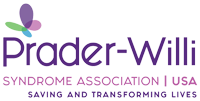Appropriate services for our children is always a top concern and school-aged children typically get most of their services through the school. So naturally when considering homeschooling, you’ll want to know what your options are for services. Generally speaking, there are four possible avenues for therapy services: Your local school district, your state’s department of disability, your health insurance, or private pay. We’ll also talk about modifications and accommodations.
School District: Technically speaking, all school districts throughout the United States, under the federal Child Find mandate (part of IDEA – Individuals with Disabilities Education Act), are required to identify students within their boundaries who have disabilities and may need special education services. Practically speaking however, the amount of services are typically very limited because the school district is not obligated to provide the same level of services to students not attending their schools. So if your child hasn’t had an IEP with your local school district yet and you plan to homeschool, you can request an evaluation; just know that what they offer you may be very limited. If your child already has an IEP and you plan to make the transition to homeschooling, then when you withdraw your child, you can request that the IEP stays in place. Because you will be homeschooling, the school will most likely make changes to the amount of services provided since their duty has now lessened.
If you plan to continue with distance learning through your school, then your IEP will stay in place just as it was before school had to switch to distance learning. As many of you discovered over the last few months of this past school year, services were often lacking. Now that schools have had some time to prepare and plan for the coming year, hopefully they will have some improvements in delivering therapies to students.
Some states allow homeschooling through virtual schools which can be private or public. Public virtual charter schools are still public schools and are therefore still obligated to prepare IEPs and provide necessary services. This can be a good choice for families that need services and can’t utilize the other options.
State Department of Disability: Every state has a department that is responsible for providing assistance and services to individuals who have disabilities. The exact name of the agency varies from state to state, but you’re probably already familiar with your state’s entity since they also provide the early intervention program. If you still have an open file, ask your case worker what services they can provide if you make the switch to homeschooling.
Health Insurance: You always have the option to utilize your health insurance (either private or Medicaid/Medi-CAL) for therapies. Many policies have a yearly limit on the number of therapy sessions provided; sometimes this limit can be waived based on medical necessity. Review your policy to see what your insurance provides. Also know that you will probably need a referral/prescription from your child’s doctor.
Private Pay: Usually a choice of last resort, but if you’ve exhausted other options or if you prefer more control, you have the option to pay out-of-pocket for therapies.
In addition to formal therapies, or as an alternative, there are a lot of things you can do at home with your child which typically fall under private pay. Horseback riding (even if not officially hippotherapy), swimming, dance classes, music classes, gymnastics, and art classes are all great activities that work on strengthening gross and fine motor skills, and social skills if it’s a group activity. If your child is in PT, OT or speech therapy, the therapist should be giving you ideas of things you can do at home in between sessions. Here are some other resources for informal therapy at home:
- FunDoRoo: This is a physical activity program developed by Professor Daniela Rubin, Ph.D, a kinesiologist and PWS researcher. Her program is available as a physical book, Kindle book, or as an app. Though it says ages 4-7, it’s really good for all ages (even adults).
- The Out of Sync Child Has Fun: This companion to the popular The Out-of-Sync Child is full of activities.
- Teaching Fundamental Motor Skills: This book is designed to demonstrate how to teach motor skills to young children.
- Sensory Integration (Addressing Learning Differences): This book was written for the classroom, but has lots of good ideas that can easily be incorporated into schooling at home.
- Learn to Move, Moving Up!: This is another book written for the classroom, but has actual lessons that incorporate movement skills. There are both preschool and elementary level versions.
- Super Duper Publications: This website has a lot of affordable and fun aides for speech, social skills, gross motor skills, and lots more.
Note: There are plenty of other resources like these; these are just a small sample to get you started and give you ideas.
Accommodations/Modifications: In addition to therapy services like physical therapy, occupational therapy, and speech therapy, school services also include accommodations (a change in how a student learns the material or things to help a student concentrate on the lesson) and modifications (a change to what the student learns). Typically when you’re at home, your child either won’t need these or they’ll be things that you can easily incorporate. For example, some common accommodations in a classroom are things like extra time to complete an assignment, sitting in the front of the class, being allowed to hold a fidget item to concentrate, etc. Some common modifications are things like doing fewer questions on an assignment or doing an easier assignment. If you are distance learning through your school district, any modifications will still need to be approved, but you will have the flexibility to make whatever accommodations help your child learn. If you are homeschooling, the ability to modify assignments will depend on how you are homeschooling. If you are homeschooling through a public or private charter school, you will need approval to modify assignments. (Check the homeschooling options in your state.) If you are homeschooling independently, you will have the ability to make whatever modifications you feel are necessary. Many parents, including me, turned to homeschooling for exactly this ability – the ability to meet the unique needs of our children at home through whatever modifications and accommodations we think are necessary. At home, your child doesn’t have the pressure or stress of keeping up with the rest of the class, and can concentrate on their own learning, at their own speed. You can do things like turn questions into multiple choice, take movement breaks as needed, let your child bounce on a ball or trampoline while doing a lesson, give oral answers instead of writing, the list goes on and on.
In all likelihood, you will use a combination of the options for therapy services, and remember that there are a lot of things you can do at home.
Next week we’ll explore How to pick curriculum: what to use, where to get, how to implement?
Contributed by Julie Casey




 Perry A. Zirkel has written more than 1,500 publications on various aspects of school law, with an emphasis on legal issues in special education. He writes a regular column for NAESP’s Principal magazine and NASP’s Communiqué newsletter, and he did so previously for Phi Delta Kappan and Teaching Exceptional Children.
Perry A. Zirkel has written more than 1,500 publications on various aspects of school law, with an emphasis on legal issues in special education. He writes a regular column for NAESP’s Principal magazine and NASP’s Communiqué newsletter, and he did so previously for Phi Delta Kappan and Teaching Exceptional Children. Jennifer Bolander has been serving as a Special Education Specialist for PWSA (USA) since October of 2015. She is a graduate of John Carroll University and lives in Ohio with her husband Brad and daughters Kate (17), and Sophia (13) who was born with PWS.
Jennifer Bolander has been serving as a Special Education Specialist for PWSA (USA) since October of 2015. She is a graduate of John Carroll University and lives in Ohio with her husband Brad and daughters Kate (17), and Sophia (13) who was born with PWS. Dr. Amy McTighe is the PWS Program Manager and Inpatient Teacher at the Center for Prader-Willi Syndrome at the Children’s Institute of Pittsburgh. She graduated from Duquesne University receiving her Bachelor’s and Master’s degree in Education with a focus on elementary education, special education, and language arts.
Dr. Amy McTighe is the PWS Program Manager and Inpatient Teacher at the Center for Prader-Willi Syndrome at the Children’s Institute of Pittsburgh. She graduated from Duquesne University receiving her Bachelor’s and Master’s degree in Education with a focus on elementary education, special education, and language arts. Evan has worked with the Prader-Willi Syndrome Association (USA) since 2007 primarily as a Crisis Intervention and Family Support Counselor. Evans works with parents and schools to foster strong collaborative relationships and appropriate educational environments for students with PWS.
Evan has worked with the Prader-Willi Syndrome Association (USA) since 2007 primarily as a Crisis Intervention and Family Support Counselor. Evans works with parents and schools to foster strong collaborative relationships and appropriate educational environments for students with PWS. Staci Zimmerman works for Prader-Willi Syndrome Association of Colorado as an Individualized Education Program (IEP) consultant. Staci collaborates with the PWS multi-disciplinary clinic at the Children’s Hospital in Denver supporting families and school districts around the United States with their child’s Individual Educational Plan.
Staci Zimmerman works for Prader-Willi Syndrome Association of Colorado as an Individualized Education Program (IEP) consultant. Staci collaborates with the PWS multi-disciplinary clinic at the Children’s Hospital in Denver supporting families and school districts around the United States with their child’s Individual Educational Plan. Founded in 2001, SDLC is a non-profit legal services organization dedicated to protecting and advancing the legal rights of people with disabilities throughout the South. It partners with the Southern Poverty Law Center, Protection and Advocacy (P&A) programs, Legal Services Corporations (LSC) and disability organizations on major, systemic disability rights issues involving the Individuals with Disabilities Education Act (IDEA), Americans with Disabilities Act (ADA), and the federal Medicaid Act. Recently in November 2014, Jim retired.
Founded in 2001, SDLC is a non-profit legal services organization dedicated to protecting and advancing the legal rights of people with disabilities throughout the South. It partners with the Southern Poverty Law Center, Protection and Advocacy (P&A) programs, Legal Services Corporations (LSC) and disability organizations on major, systemic disability rights issues involving the Individuals with Disabilities Education Act (IDEA), Americans with Disabilities Act (ADA), and the federal Medicaid Act. Recently in November 2014, Jim retired.